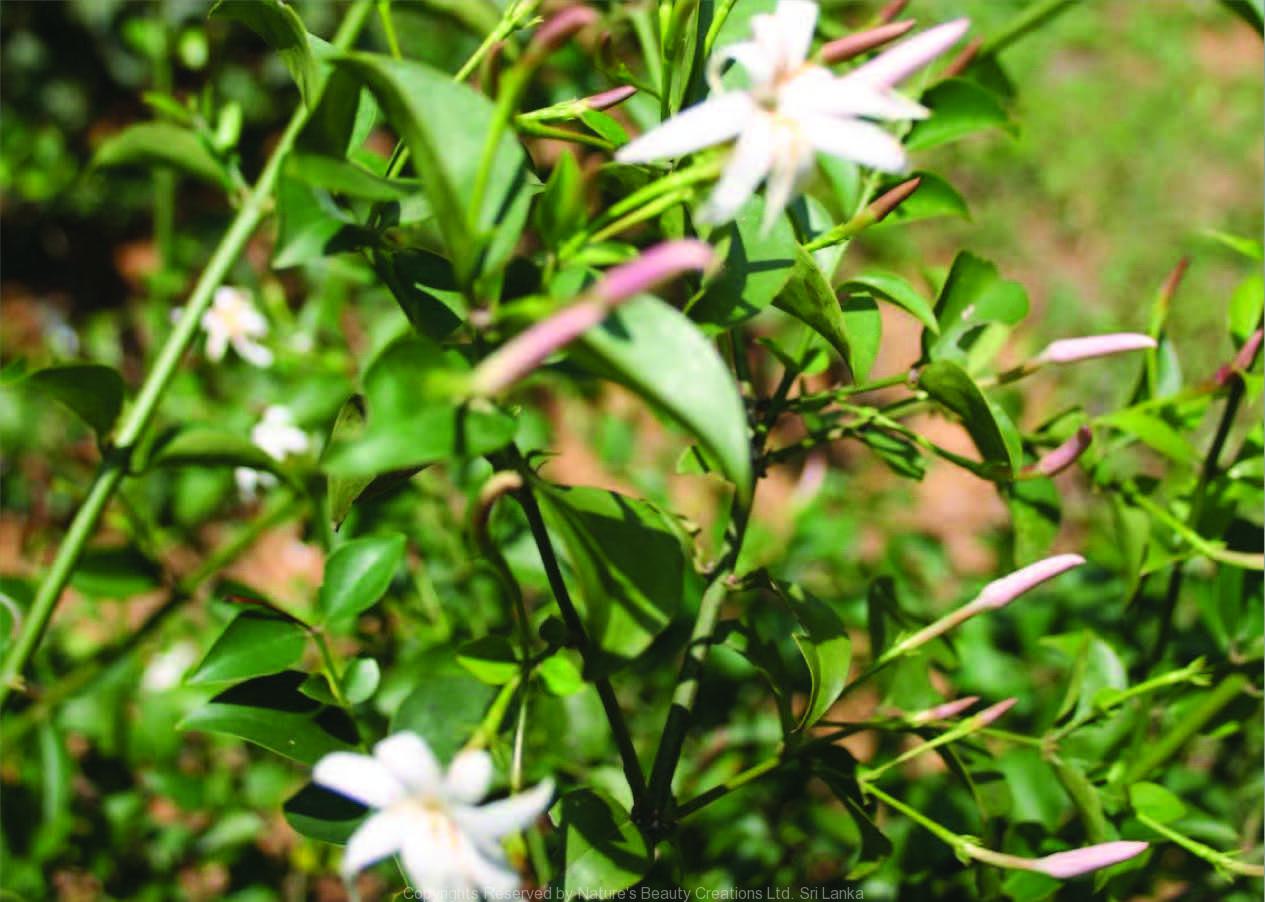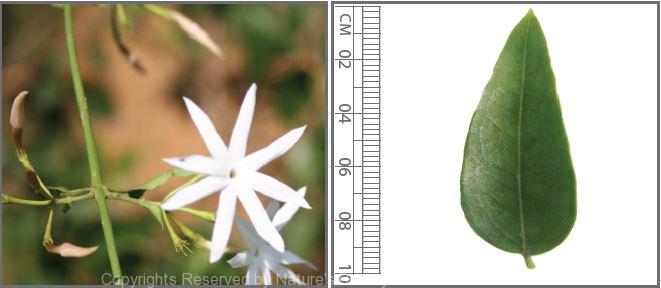

Traditional Knowledge
Useful plant parts :
Root and flower
Uses in traditional medicine :
- Infusion of the dried flowers is used as an eye wash for red eye
- Roots are used to treat ringworm
Scientific Research
Chemical constituents:
Bioactivity :
Ethanol extract of whole plant: antitumour and hepatoprotective; aqueous extract of whole plant: anti-inflammatory
Clinical:
References : Jain, A. et al., (2011), Jasminum Species: An Overview, International Journal of Institutional Pharmacy and Life Sciences, 1(1), 251-266. Joshi, M. C. et al., (2008), Hepatoprotcetive activity of Jasminum angustifolium Linn. against CCl4 induced hepatic injury in rat, Pharma- cologyonline, 3, 197-205. Raju, A. et al., (2010), Antitumor activity of Jasminum angustifolium linn. against dalton’s ascitic lymphoma : a research, International Journal of Drug Formulation & Research, 1(2), 124-130. Singh, V. et al., (2012), Anti-inflammatory and analgesic activity of Jasminum angustifolium Linn, Journal of Pharmacy Research, 5(2), 1169-1170.
Copyrights Reserved By
Natures Beauty Creations




